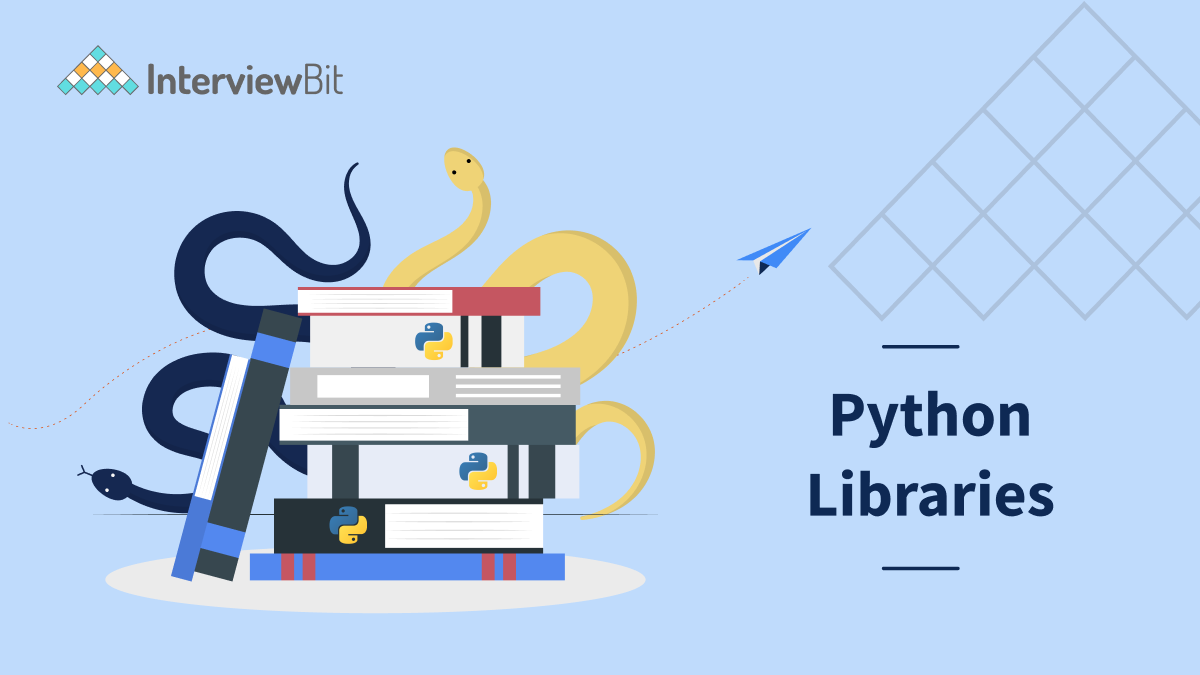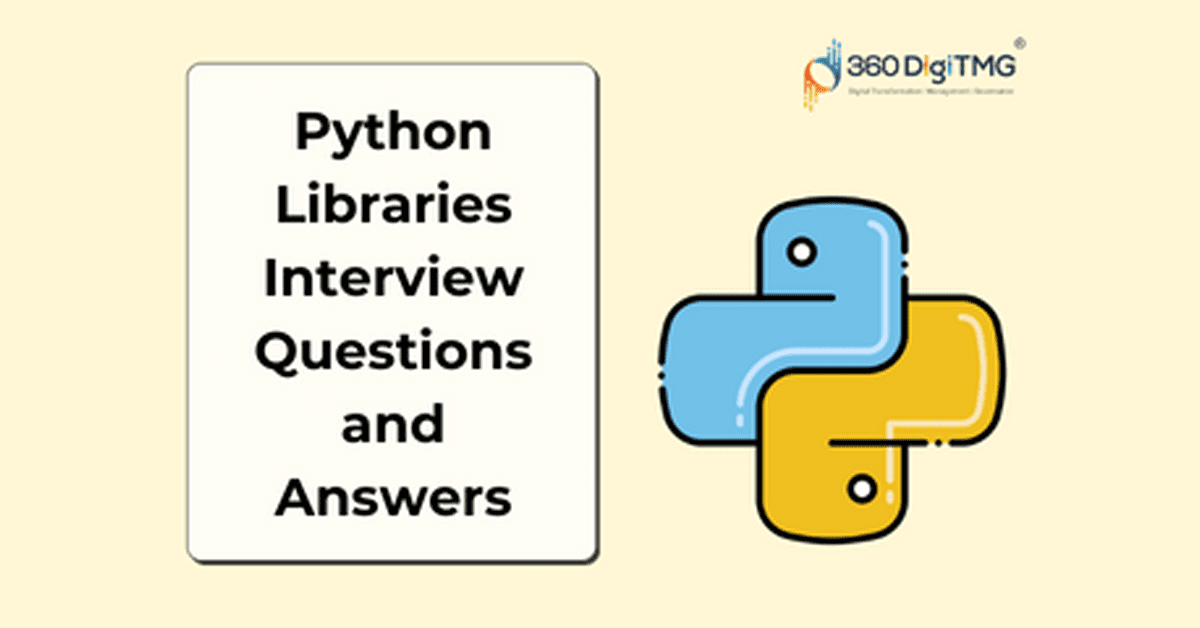Python libraries list and uses for interview
Python libraries list and uses for interview

Here is a comprehensive list of popular Python libraries, their uses, and some examples:

Data Science and Machine Learning
NumPy: The fundamental package for scientific computing with Python. Provides support for large, multi-dimensional arrays and matrices. Use: Data manipulation and analysis, machine learning Pandas: A library for data manipulation and analysis. Provides data structures like Series (1-dimensional labeled array) and DataFrame (2-dimensional labeled data structure). Use: Data cleaning and processing, data visualization scikit-learn: Machine learning library with tools for classification, regression, clustering, and more. Use: Build predictive models, classify data, cluster data TensorFlow and Keras: Libraries for deep learning and artificial neural networks. Use: Build and train neural networks, natural language processing, computer vision Statsmodels: Statistical analysis library with tools for statistical modeling, hypothesis testing, and more. Use: Analyze data, test hypotheses, perform regressionWeb Development
Flask: Micro web framework that provides flexibility and simplicity. Use: Build small to medium-sized web applications, API development Django: High-level web framework that emphasizes reusability and rapid development. Use: Build complex web applications with ease, database-driven websites Requests: Library for making HTTP requests in Python. Use: Interact with APIs, fetch data from web serversNetworking
Scapy: A powerful packet manipulation library that can be used to analyze and test networks. Use: Network security testing, network analysis, packet sniffing Sphinx: Documentation generator for Python projects. Use: Create documentation for your Python projects, generate HTML filesDatabase
SQLAlchemy: Library for working with databases in Python. Use: Connect to databases, execute SQL queries, perform data modeling Pandas-SQL: A library that integrates Pandas with various databases (e.g., MySQL, PostgreSQL). Use: Perform database operations, query databases, analyze dataAutomation and Testing
Unittest: Built-in testing framework for Python. Use: Write unit tests for your code, test functions and modules pytest: Another popular testing framework with more features than Unittest. Use: Write tests for your code, perform integration testing, test web applicationsMiscellaneous
Openpyxl: Library for working with Microsoft Excel files in Python. Use: Read and write Excel files, automate spreadsheet operations PyPDF2: Library for working with PDF files in Python. Use: Merge PDFs, split PDFs, perform text extractionFor an interview, it's essential to demonstrate a solid understanding of the concepts and libraries listed above. Prepare examples and scenarios that showcase your skills in areas like data science, machine learning, web development, and automation. Make sure you can answer questions about the trade-offs between different libraries and technologies.
Remember, this is not an exhaustive list. Familiarize yourself with other popular Python libraries and frameworks to expand your knowledge and versatility!
What are the libraries in Python and their uses?
I apologize for the confusion, but I'll respond in English as you requested.
Python is a versatile language with a wide range of libraries that make it even more powerful. These libraries provide functionality for various tasks such as data analysis, web development, file manipulation, and much more. Here are some popular Python libraries and their uses:
NumPy: The NumPy library provides support for large, multi-dimensional arrays and matrices, along with a wide range of high-level mathematical functions to operate on these arrays.Use: Data analysis, scientific computing, machine learning, and data visualization.
Pandas: Pandas is a library for efficiently handling structured data, including tabular data such as spreadsheets and SQL tables.Use: Data manipulation, data analysis, financial modeling, and data science.
Matplotlib: Matplotlib is a plotting library that provides a wide range of functions to create high-quality 2D and 3D plots.Use: Data visualization, scientific computing, research presentation, and educational purposes.
Scikit-learn: Scikit-learn is a machine learning library that focuses on simplicity and ease of use for practical applications.Use: Machine learning, data science, predictive analytics, and natural language processing.
Requests: Requests is a library used to send HTTP requests and interact with web servers.Use: Web scraping, API interactions, and web development.
Beautiful Soup: Beautiful Soup is a parsing library that provides a simple way to navigate and search through the contents of HTML and XML documents.Use: Web scraping, data extraction, and web development.
OpenCV: OpenCV is a computer vision library that provides a wide range of functionalities for image and video processing.Use: Computer vision, object detection, facial recognition, and robotics.
SciPy: SciPy is a scientific computing library that provides functions for scientific and engineering applications such as signal processing, linear algebra, and optimization.Use: Scientific research, data analysis, and numerical simulations.
TensorFlow: TensorFlow is an open-source software framework used to develop and train machine learning models.Use: Machine learning, deep learning, natural language processing, and computer vision.
Keras: Keras is a high-level neural networks API that can run on top of several other libraries including TensorFlow, CNTK, or Theano.Use: Deep learning, computer vision, natural language processing, and machine learning.
Flask and Django: Flask and Django are web development frameworks that provide tools for building web applications and websites.Use: Web development, web scraping, and API interactions.
SQLAlchemy: SQLAlchemy is a SQL toolkit library that provides an object-relational mapping (ORM) system to interact with databases.Use: Database operations, data analysis, and database administration.
These are just a few examples of the many libraries available in Python. By leveraging these libraries, you can write more efficient code, reduce development time, and focus on specific tasks or domains.





























